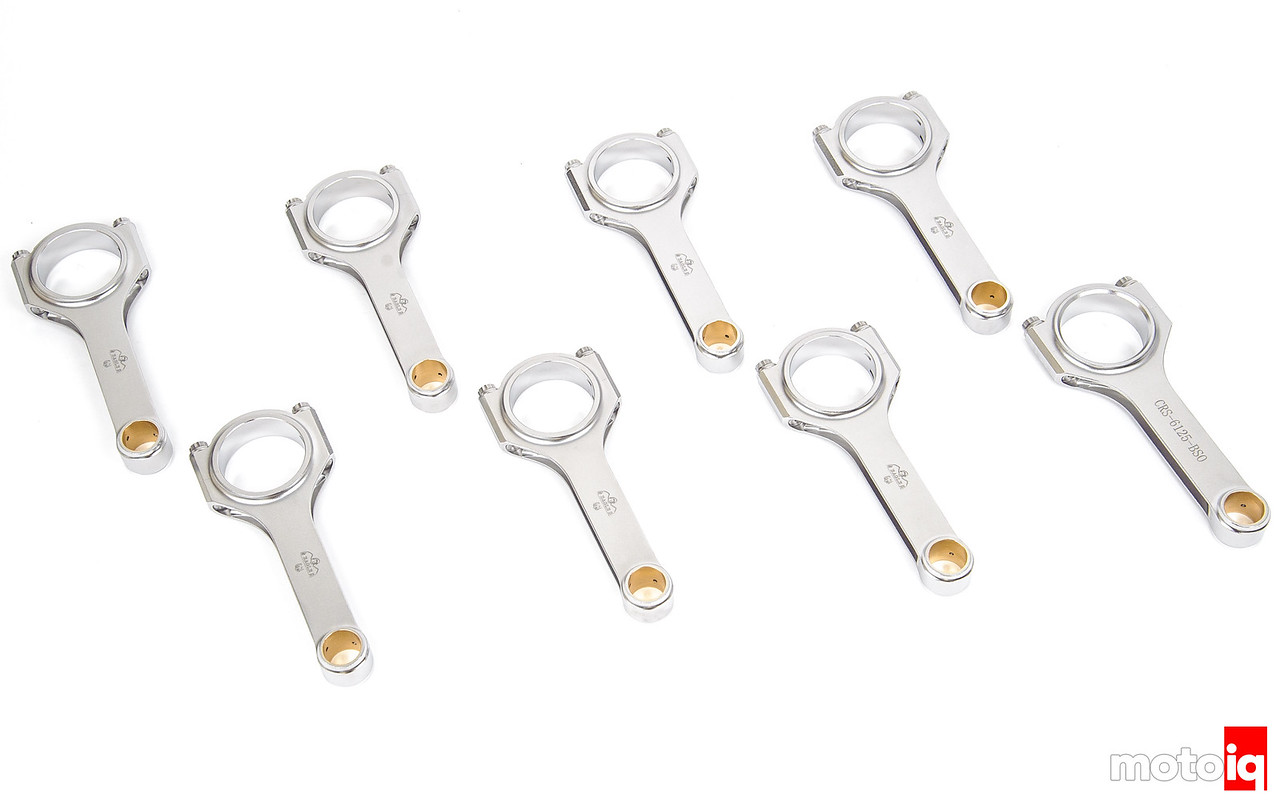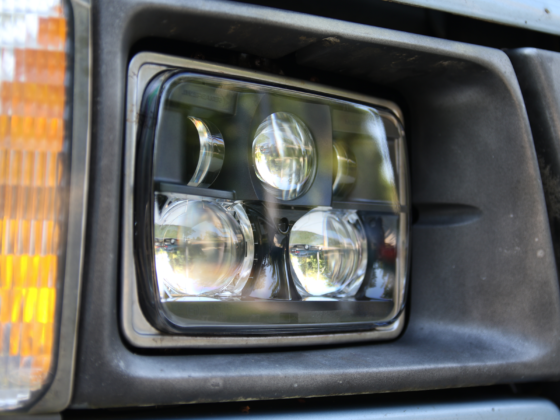
For cylinder heads we are using AFR’s 260cc LS3 “Mongoose” heads part number 1840. The Mongoose heads feature 100% CNC ported intake, exhaust, and chambers using AFR’s advanced engineering and flow techniques to produce excellent industry-leading low lift flow. Mongoose heads feature A356 aluminum castings, titanium retainers and the highest quality components, throughout. They’re designed for 4.000 or larger bore applications up to 454 CI, operating up to 7000 RPM. The heads feature a 5 angle valve job a 69 cc chamber volume and a flow up to 384 cfm on the intake and 255 cfm on the exhaust. Although some heads have more peak flow, the AFR heads have industry-leading flow at lower lifts which is critical because the valves spend more time at lower lifts rather than at full open.

The AFR Mongoose heads feature a large 2.165′ diameter intake valve and a 1.600′ diameter exhaust valve

To assure good head seal even with high compression and drifting abuse, we used a JE Pro Seal head gasket. The Pro Seal gasket is an MLS type gasket that uses multiple layers of thin stainless steel which are polymer-coated to form a tough and forgiving seal to the block. A folded stopper layer is used around the cylinders to give an increased clamp load to further improve the seal. The folded stopper really helps on engines with high cylinder pressures.

For a camshaft, we used an AFR mechanical roller cam. We have found that hydraulic roller cams, even performance low lash ones to be unreliable in drifting as the rapid RPM fluctuations and harmonics cause them to pump up resulting in a loss of control of valve motion. To prevent this the use of a solid lifter mechanical cam is critical
The cam has pretty reasonable specs with 256 degrees of duration at 0.050″ lift on the intake and 273 degrees duration on the exhaust. The lift is 0.712″ on the intake and 0.688″ on the exhaust side. The lobe centers are 107 degrees on the intake and 115 degrees on the exhaust with a 111-degree lobe separation angle. These specs are good for a fuel-injected, common plenum, naturally aspirated engine.
To compare, the stock LS3 cam has 204 degrees of intake duration and 211 degrees on the exhaust with 0.551″ intake lift and 0.525″ exhaust lift on a 117-degree lobe separation angle. This is way less lift, duration and a way more spread lobe angle for much less overlap. You can tell what was designed for low emissions and a smooth idle and what isn’t!

We used AFR Supplied Morel Ultra Pro solid mechanical roller lifters part number MM5425. They have a billet body and are good for 8000 rpm. These are solid with no hydraulic lash takeup. This means that the valve lash has to be periodically checked and adjusted. With solid lifters, there is no potential for pump up or float caused by the lifters not following the cam lobe accurately. That’s why they are used for racing applications. Having to adjust the valves as part of the car’s maintenance is the only drawback to solid mechanical lifters.




31 comments
What did you rev this engine to produce 650whp?
7200 rpm
What’s the part number for the block you used? TIA
12673475
Hello Mike
Would you able to build for me Good LSX engine for Drift?
Of course.
Of course, we can, it just takes money.
Mike, great information! I was wondering to build this engine as you did on your channel but running off regular premium gas, what modifications would I need to make? How much power loss could I expect as a result? I’m eager to get similar horsepower at the rear wheels. But I’m sure the current setup wouldn’t allow for premium gas.
You would need a lower compression ratio. You would probably lose 40 hp or so.
How much did this build cost you total ?
Price out all the parts including the block and every peice needed to have a plug and play motor. Multiply that number by 2.5 and it will be close.to actual cost.
Actually, it’s a lot less than that. The parts are expensive. Labor and machining are about $4000, WPC of most parts is about $2700
Price out all the parts including the block and every peice needed to have a plug and play motor. Multiply that number by 2.5 and it will be close.to actual cost.
Mike has $4000 plus $2700 parts = $6700
Pete’s rule of thumb parts [$2700] x 2.5 = $6750
Not too far off .
then there’s all the other stuff needed to have a runnin motor….Like Fuel ,Ign systems , ETC
There is no way the parts on this motor are only $2700! That is just the cost to WPC treat them.
What is the part number for the cam?
We don’t know, it was customer supplied and we didn’t recommend using it for drifting, not enough low end.
Will a 6.0l ls be able to use the same parts? I have a Pontiac G8 that I want to try and mimic this on.
Yes, but you won’t have quite the same displacement.
Thank you for the thorough explanation of everything. I wish more builders could/would break it all down as you have done!
hi mike, love your videos and information. can you please tell me the make and part # of the wrist pins you used in this build. thank you for your time.
Mike was $6700.00 around the actual price for plug and play
Mike said the labor, machining and WPC of most parts was $6700. That doesn’t include the cost of any of the parts. I would bet another $15000 in parts, my guess is $22000 to make it plug and play.
what about the core shift in the factory ls3 block?
what about it?
We notice some blocks are very thin on one side due to this. Some blocks are OK. Its just a cuation for people buying new blocks to do builds like this.
hello mike i am from holland and i want to build this engine for my volvo amazon 1966 project car
can i run this engine with 98 octane pump gas without race gas
or do i need to use another compresion ratio for that
i am planing to use it for street and strip use
hope you can help me
Yes you need to reduce the compression to around 11.5:1
Hi Mike. Love the content just one simple Question, Did you have the 6.2 Ls Bored over to a 6.8 liter for The Stroker kit or the stroker kit gave it the displacement to a 414 cubic inch?
It’s done with stroke, aluminum LS blocks can’t be bored out much, we said exactly what we are doing in the third paragraph, don’t be lazy, read!
Hi Mike. What oil weight do you recommend for drift ls3 with tight bearing clearances. Is 15w50 will be good choice or its too heavy ?
Thank you
Sure it is what we run.